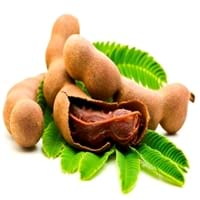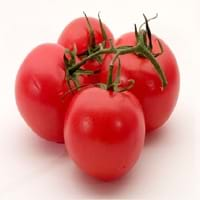Health Benefits
Boosts immune system, Boosts respiratory health, Cancer prevention, Digestive aid, Piles treatment
Anti depressant, Cancer prevention, Heart care, Muscle pain relief, Prevents constipation, Regulation of heart rate, Weight loss properties
General Benefits
Beneficial in improving nerve function, Protects against parasites and worms, Relieves pain
Controls blood pressure, Eye care, Maintains healthy cholesterol level, Strengthens bones
Skin Benefits
Anti-aging benefits, Brightens and lightens complexion, Exfoliates skin, Hydrates skin, Treatment of dark spots
Anti-aging benefits, Heals sunburn, Skin rejuvenation, Treatment of acne, Treatment of skin diseases
Hair Benefits
Prevents hair loss
Good conditioner, Prevents hair loss, Softening mask
Allergy Symptoms
Abdominal pains, Breathing difficulty, Dizziness, Eczema, Fainting, Hives, Itching, Nasal congestion, Swelling of face, Tingling sensation in mouth, Vomiting
Anaphylaxis, Coughing, Diarrhea, Eczema, Hives, Itching sensation in throat, Nausea, Skin Rashes, Runny nose, Sneezing, Swelling of mouth, tongue or lips, Vomiting, Wheezing
Side Effects
Decrease in blood sugar levels, Induces acid reflux, Allergic reaction, Tooth decay, May form gallstones
Heart burn
Best Time to Eat
Along with meal, As a snack in the late afternoon, Don't consume at night and before bed, Strictly avoid empty stomach
Along with meal, Don't consume at night and before bed, Morning time (before lunch)
Vitamin B5 (Pantothenic Acid)
Vitamin C (Ascorbic Acid)
Vitamin K (Phyllochinone)
Calories in Fresh Fruit with Peel
Not Available
Calories in Fresh Fruit without Peel
Not Available
Calories in Canned Form
Not Available
Type
Tropical
Berry, Fruit vegetable
Season
Spring, Summer
All seasons
Varieties
PKM 1, Urigam, Hasanur, Tumkur prathisthan, DTS 1 and Yogeshwari
Better Boy, Early Girl, Beefsteak, Beefmaster, Pink Brandywinem, Caspian Pink, Thai Pinks, Hawaiian Pineapple, Kellogg’s Breakfast, Cherokee Purple, Black Ethiopian and Paul Robeson
Color
Brown, Reddish-brown
Green, Orange, Pink, Purplish black, Red, White, Yellow
Shape
Curving Cylinder
Round
Taste
Sour-Sweet
Sour, Sweet
Origin
Africa
Central America, South America
Soil Type
Loam, Sandy, Sandy loam, Well-drained
Loam, Sandy loam
Climatic Conditions
Humid to dry, Rainfall, Warm to hot climate
Sunny, Warm
Facts about
- Tamarind is used to prevent body odor.
- African children use the tamarind seeds in games.
- No cases of tamarind toxicity or allergy reported till date.
- Around 10,000 varieties of tomatoes are grown in the world.
- In Buñol, people celebrate the Tomatina festival where around 1.5 lakh tomatoes are used.
- As per Guinness book of records, heaviest tomato weighed 3.51 kg.
Other Countries
Africa, Australia, Brazil, China, Mexico, Nigeria, Sudan, Taiwan
Brazil, Egypt, India, Iran, Italy, Mexico, Spain, Turkey, United States of America
Top Importer
United States of America
Nigeria
Top Exporter
Thailand
Netherlands
Botanical Name
Tamarindus indica
Solanum lycopersicum
Synonym
Tamarindo, tamarindus
Lycopersicon esculentum
Subkingdom
Tracheobionta
Tracheobionta
Division
Magnoliophyta
Magnoliophyta
Class
Liliopsida
Magnoliopsida
Subclass
Rosidae
Asteridae
Family
Fabaceae
Solanaceae
Species
Tamarindus indica
S. lycopersicum
Generic Group
Tamarind Sub
Nightshade
Difference Between Tamarind and Tomato
We might think that Tamarind and Tomato are similar with respect to nutritional value and health benefits. But the nutrient content of both fruits is different. Tamarind and Tomato Facts such as their taste, shape, color, and size are also distinct. The difference between Tamarind and Tomato is explained here.
The amount of calories in 100 gm of fresh Tamarind and Tomato with peel is Not Available and 18.00 kcal and the amount of calories without peel is 239.00 kcal and Not Available respectively. Thus, Tamarind and Tomato belong to High Calorie Fruits and Low Calorie Fruits category.These fruits might or might not differ with respect to their scientific classification. The order of Tamarind and Tomato is Fabales and Solanales respectively. Tamarind belongs to Fabaceae family and Tomato belongs to Solanaceae family. Tamarind belongs to Tamarindus genus of Tamarindus indica species and Tomato belongs to Solanum genus of S. lycopersicum species. Beings plants, both fruits belong to Plantae Kingdom.









